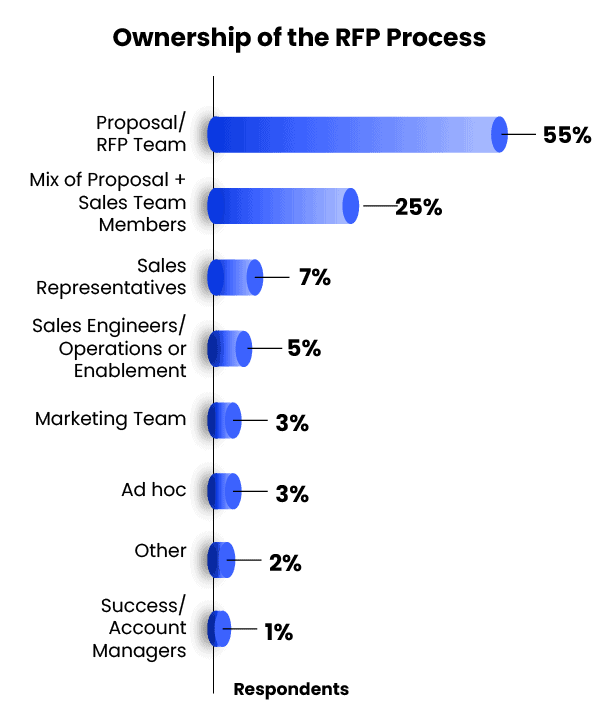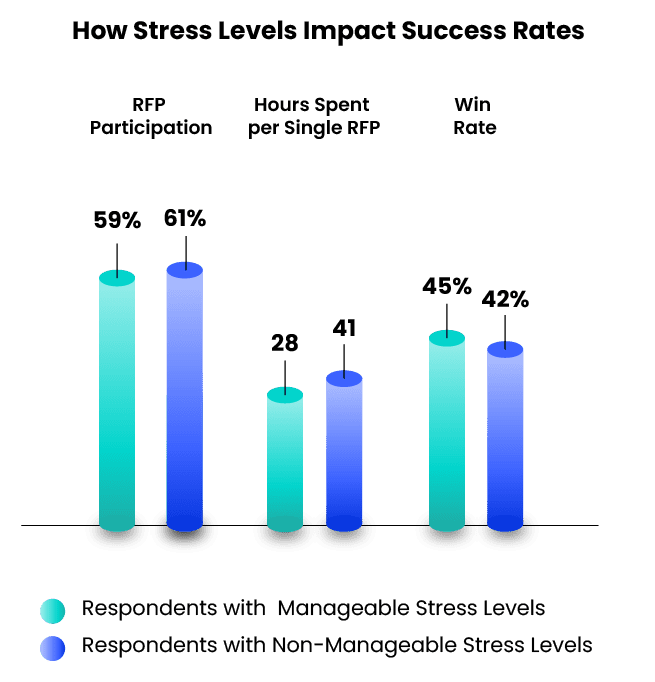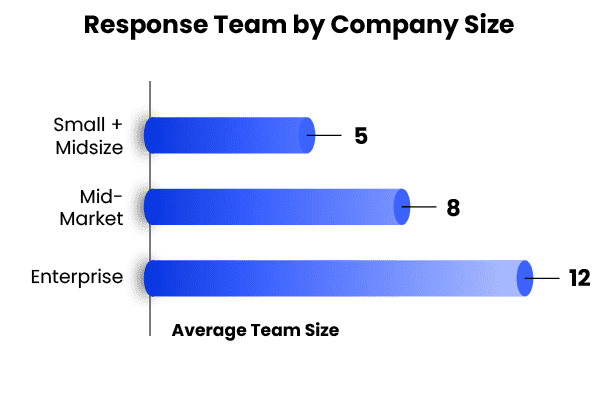2023 RFP Trends & Benchmarks
Chapter 4: RFP Team Configuration & Collaboration Challenges
RFP teams became more formalized this year, yet internal collaboration challenges remain.
This year, more than half of respondents (55%) reported that a dedicated proposal manager (or team) was the primary owner of their RFP process, continuing an upward trend we’ve been observing for the past few years.
Companies where a proposal manager or team owns the process.
37
%
2020
42
%
2021
55
%
2022
This increase indicates a formalization of ownership for the proposal process. Notably, APMP member have a greater baseline level of formalization (62% have a dedicated proposal manager or team at the helm) but still, this increase is seen among non-members too (48% report that a dedicated RFP manager or team runs their process). People, broadly, are coming to appreciate the value of specialization.

Collaboration With SMEs Remains the #1 Challenge
The number one reported challenge this year was “collaborating with subject matter experts (SMEs)”—continuing a trend we’ve seen since the beginning of the pandemic. For the past three years, almost half of RFP teams have cited collaboration with SMEs as a top challenge.
Percentage of Teams Who Find “Working With SMEs” a Challenge
44
%
2020
45
%
2021
51
%
2022
In the number two spot, “finding answers” is another repeated challenge, while “meeting deadlines and dealing with delays” has jumped to number three (up from #5) over the past year. Interestingly, 4% of respondents claim to have no challenges. (If you’re among them, please write to us so we can learn your secrets.)
Stressed Teams Spend 13 Hours Longer on RFPs
Among those at associate or manager level, 1 in 5 (20%) say their stress levels aren’t manageable. This is bad news because stressed teams spend way longer on RFPs and don’t see the rewards.
On average, stressed teams spend 13 hours longer per RFP than teams with manageable stress. And ddespite spending more time, stressed teams have a 3% lower win rate than their non-stressed peers.

Industry Insight: Team Sizes Range from 7 to 11 People
When it comes to team size by industry, Financial Services has the largest number of people on a dedicated RFP team at 11 members, an increase from last year’s 9.
This may be related to the tight regulations this industry operates within—it’s possible they simply need more staff to ensure accuracy amid a rapidly changing economic climate. Software, ever lean and efficient, remains one of the smallest team sizes at 7 people.

Curious to learn about more writing trends? Download the full report: RFP Trends & Benchmarks.
RFP Teams Grow With Company Size
Small & Midsize companies tend to have the smallest dedicated RFP teams, as well as the lowest win rates. Although team size may impact a company’s chance of winning overall, it’s not the only contributing cause. Smaller companies tend to lack the name recognition of larger brands—and sometimes, in a competitive landscape, size does matter.

Chapter Summary: Proposal Specialization Trends Upward, Yet SME Challenges Remain
More than half of companies we surveyed now report that they have a dedicated proposal manager or RFP team owning their process. But despite this specialization, collaboration with SMEs remains a top challenge over the past three years. This past year, it increases by 6% to a problem for the majority (51%) of teams this year. While proposal ownership helps to raise satisfaction levels, it has not yet alleviated the biggest hurdle in the process.
Up next: RFP software seems to help alleviate stress and improve satisfaction.
Download The Full Report
Get more best practices and trends to guide your team in 2023.